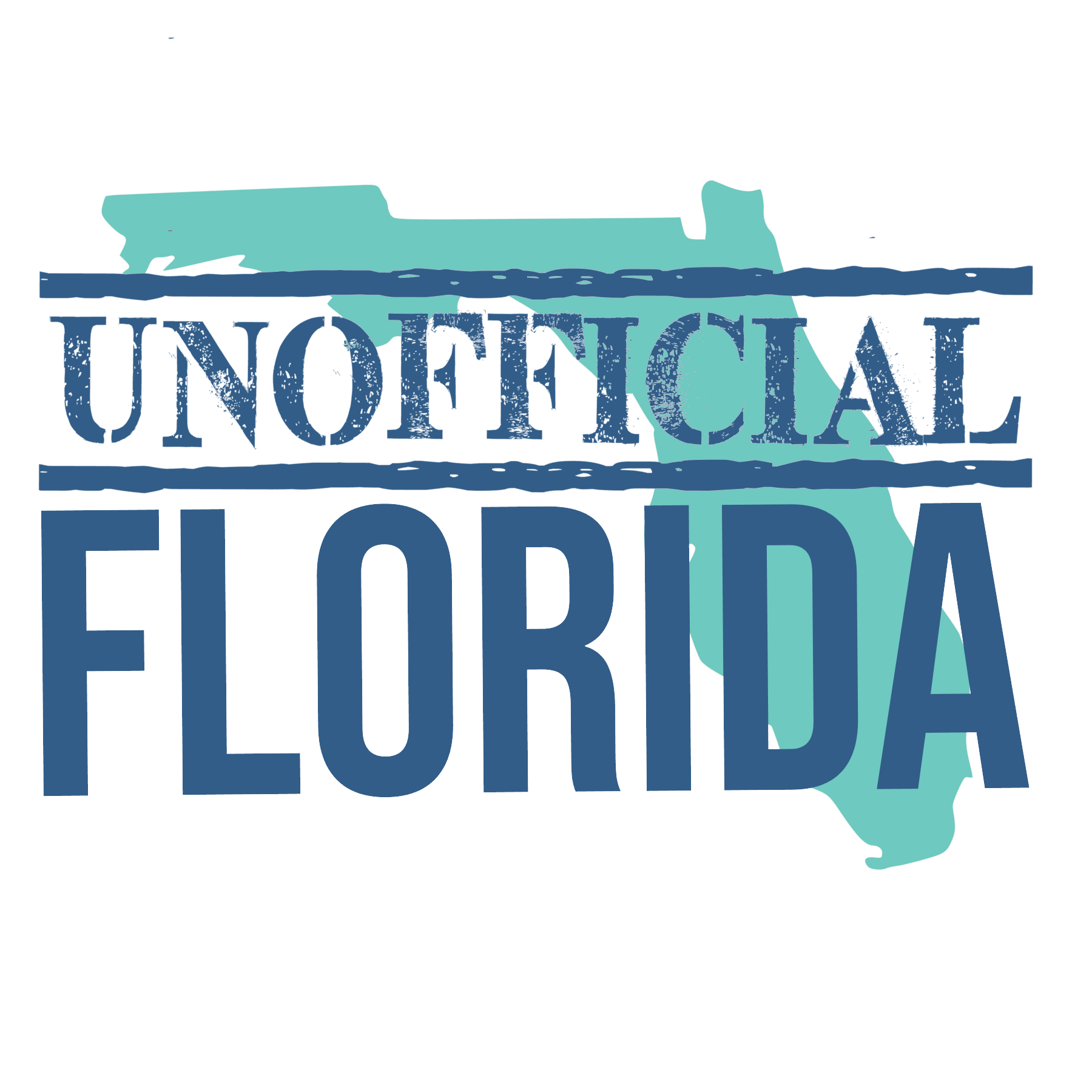Interested in scalloping in Florida? In late summer, it’s a Florida tradition to head out to the seagrass beds and collect scallops.
Information in this article on scallop season dates and daily bag limits are good for 2022.
Contents
What Type of Scallops Are in Florida?
On Florida’s west coast, you’ll find bay scallops. In contrast to sea scallops (these are the ones you would order at a restaurant), bay scallops are smaller and sweeter.

How Do You Scallop?
Scalloping is like an underwater Easter egg hunt. Using snorkel gear, you swim over the seagrass beds and watch for the scallops in the seagrass and sand. Then, you grab them and put them into a mesh bag.
Some people watch for the shape of the shell, others watch for the electric blue eyes of the scallop, while others watch for the ridges along the opening. Once you’ve been scalloping, you’ll figure out what works for you.
If you’d prefer not to grab the scallops with your hand (or if they are too deep for you to dive down), you can legally use a landing or dip net.
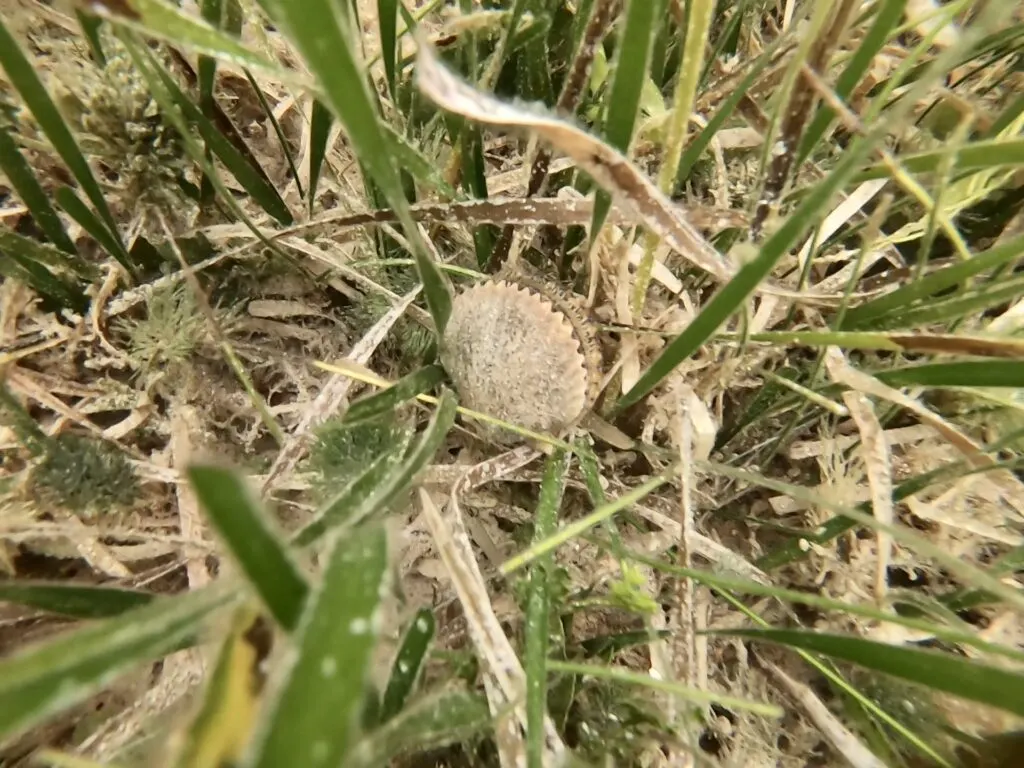
What Gear Do You Need to Scallop?
Unlike fishing or scuba diving, you don’t need much gear to scallop. The only two mandatory pieces of equipment you’ll need are a mask and a bag to put your scallops.
Other gear that you might find helpful: A snorkel, fins, gloves (some people like to wear gloves, while I like to go without), a net, an oyster shucking tool, and a diver down flag.
What is a Diver Down Flag and Why Do You Need One?
Florida law mandates that divers and snorkelers use a diver down flag to alert boaters there are divers or snorkelers in the water. Snorkelers must stay within 100 feet of the flag when in rivers, inlets, and channels; and 300 feet when in open water. Read more about Florida’s diver down flag laws.
If you are going on a scalloping charter, a diver down flag and all snorkel gear will be provided for you.
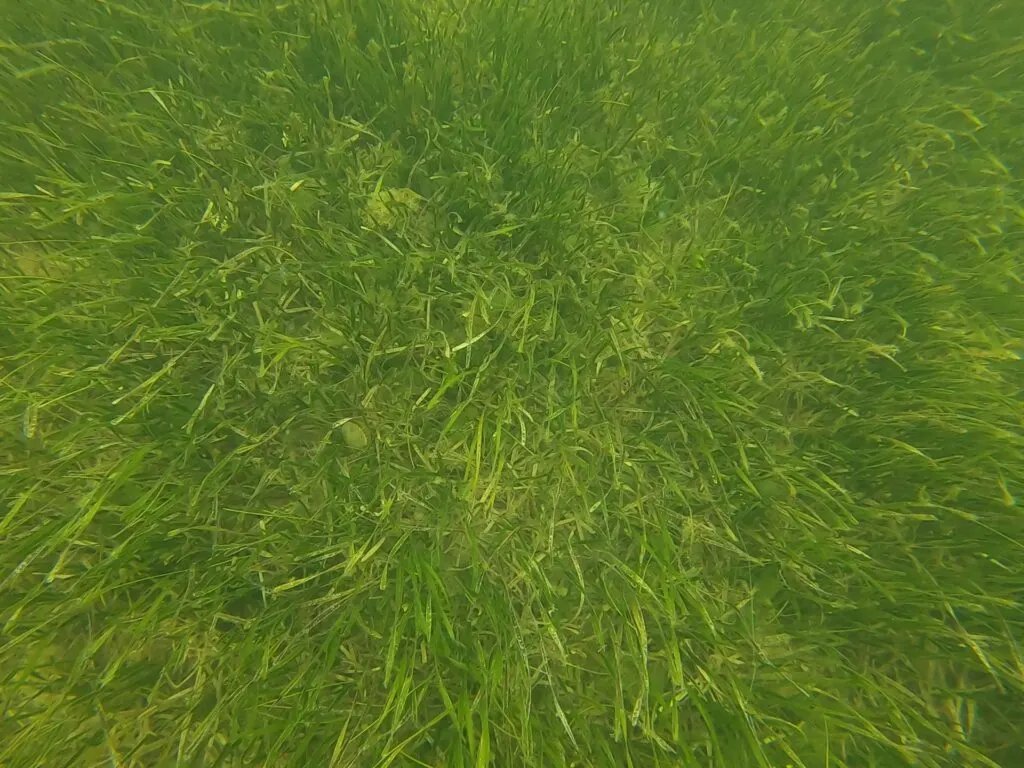
When is Scallop Season in Florida?
In general, scallop season lasts from late June to late September. Scallop season takes place at different times during the summer. The Florida Fish and Wildlife Conservation Commission provides a map with dates for each area.
- Gulf County: August 16 to September 24.
- This area runs from the Mexico Beach Canal to the western edge of St. Vincent Island.
- Franklin County to Northwest Taylor County: July 1 to September 24.
- This area runs from the western edge of St. Vincent Island to the mouth of the Fenholloway River.
- Fenholloway River to Suwannee River: June 15 to September 5.
- This area runs from the Fenholloway River to the mouth of the Suwannee River in Levy County.
- Levy County, Citrus County, and Hernando County: July 1 to September 24.
- This area runs from the mouth of the Suwannee River to the Hernando-Pasco county line, which includes the popular Crystal River.
- Pasco County: July 15 to July 24.
- This area runs from the Hernando-Pasco county line to north of the Anclote Key Lighthouse. It also includes the Anclote River.
You can get more details about dates from the FWC website.
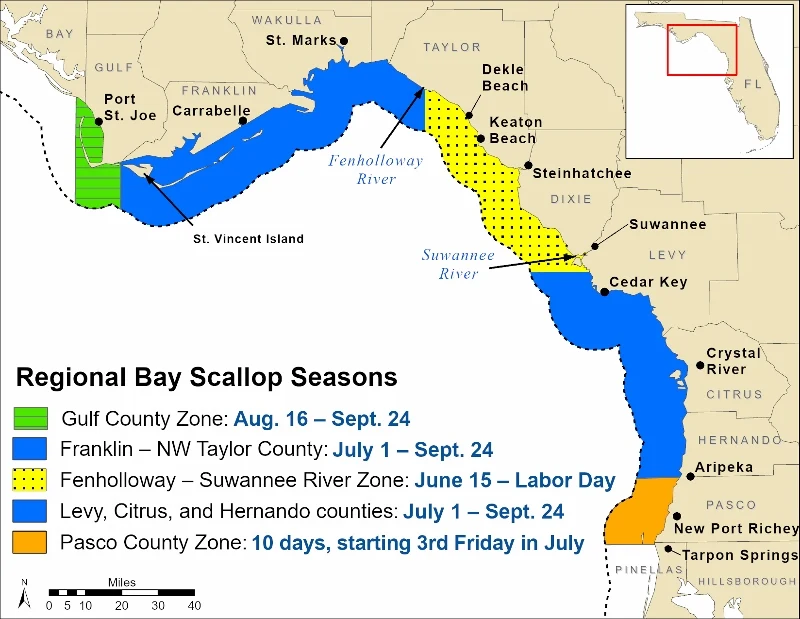
Do You Need a License to Scallop?
You need a Florida Saltwater Fishing License to scallop, unless you are on a chartered boat. Both Florida residents and non-residents need a Florida Saltwater License. You can get a Florida Saltwater License through the Florida Fish and Wildlife Commission.
Children under 16, whether they are Florida residents or not, do not need a fishing license. Similarly, senior Florida residents, age 65 and over, do not need a fishing license.
How Many Scallops Can You Take?
In general, each person has a 2 gallon scallop limit in the shell, or 1 pint of bay scallop meat. However, from June 15 to June 30 in Fenholloway River through Suwannee River Zone, each person is limited to a 1 gallon scallop limit in the shell or 1/2 a pint of bay scallop meat.
Additionally, each vessel has a limit of 10 gallons of scallops in the shell or 4 pints of bay scallop meat. It is important to note that even if your vessel has less than 5 people – you cannot take more than the individual scallop daily bag limit.
Can Kids Scallop?
Yes! Scalloping is a great family activity. Whether you are on a scalloping charter or have your own boat, opt for locations with shallow water. We watch the tide tables and take our kids out during low tide.
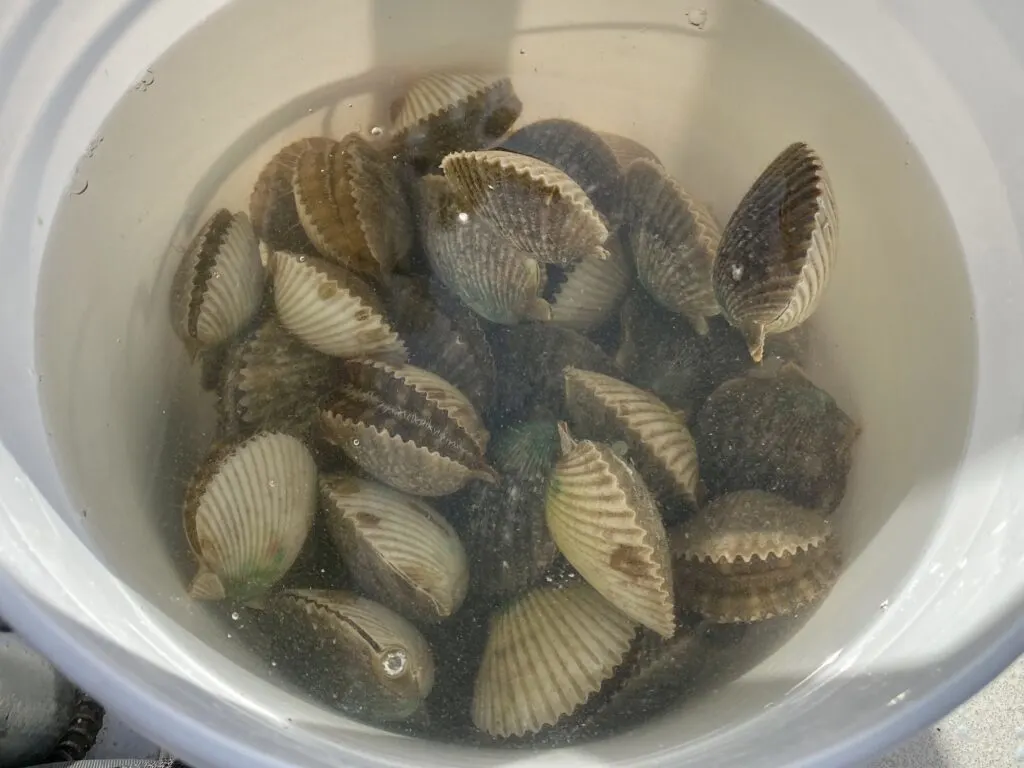
Information About Scalloping Charters
If it is your first time scalloping in Florida, I recommend you head out with an experienced scalloper. If you don’t know one, there are a number of scalloping charters along Florida’s Gulf Coast.
We recently went out with River Safaris located on the Homosassa River. Here is an overview of our scalloping charter:
- After checking in and filling out a few waivers, we headed to the dock to meet our boat captain.
- After everyone arrived, six guests total, we got our snorkel gear, some quick safety instructions, and general information about the plan for the day. Then, we headed out to the Gulf of Mexico.
- On our 30 minute trip out, we passed a dolphin and a mating herd of manatees.
- Our first stop offered crystal clear water over a seagrass bed. It was shallow, maybe 2 feet deep over the grass beds. An in water guide gave us a quick lesson on scalloping and showed us some scallops in the water so we knew what we were looking for. We were welcome to stay with the in water guide for as long as we’d like, but my husband and I opted to search for scallops on our own. While we were snorkeling, the boat captain was constantly keeping an eye on everyone in the water.
- Unfortunately, no one in our group found many scallops at this location. We boarded the boat and moved to the next stop.
- Our next stop was just a few minutes away, but the visibility was sandy and the water was much deeper – about 8 feet of water. Unfortunately, our group didn’t have any better luck at this location. We also had a few group members that were not strong swimmers, so we boarded the boat again to head to a third location.
- Luckily, at our third location, we were much more successful finding scallops. Different members of the group found differing amounts of scallops. I found about 16, my husband about 25, a few teenage boys in our group found around 25 or so each, while the last two remaining group members found a handful each. Our guide found a half of a bag of scallops, which were split evenly between the parties on the boat.
- After our third stop, we headed back to shore. Upon arriving at the dock, our guide shucked our fresh bay scallops with an oyster knife and provided a scallop shucking lesson.
River Safaris also offers airboat tours, manatee tours, fishing charters, boat rentals, and more.
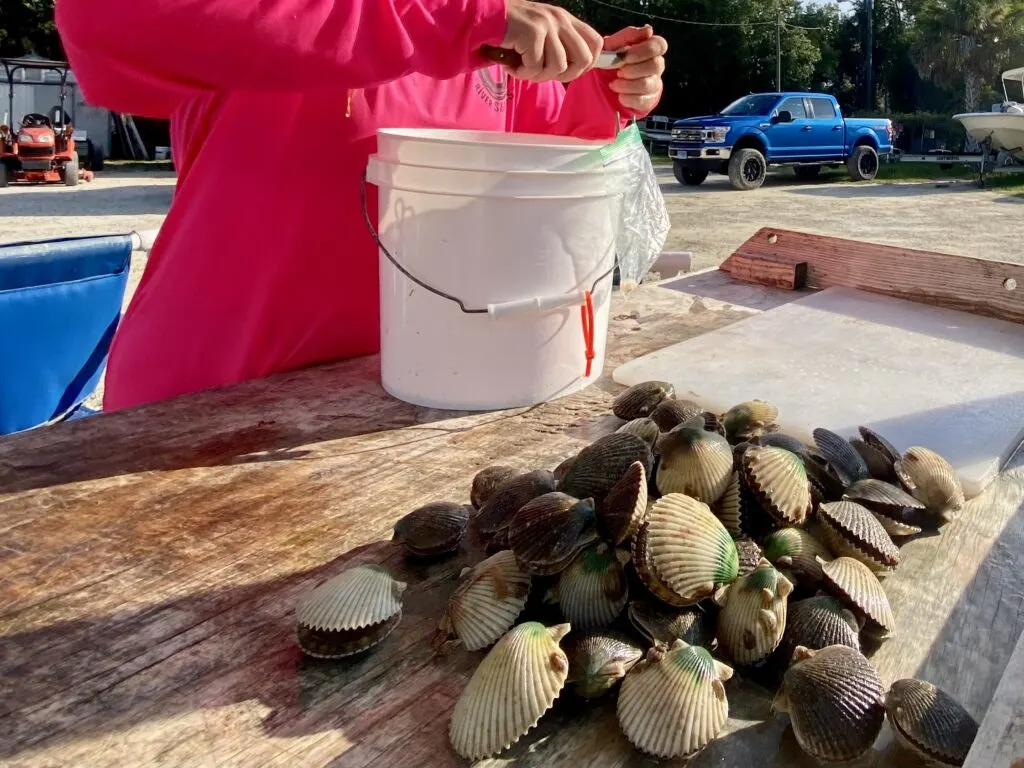
Shucking bay scallops.
Fill Out the Florida Fish and Wildlife Conservation Commission Survey
After your scalloping adventure, the Florida Fish and Wildlife Conservation Commission would love for you to fill out their short survey. The survey collects information about your trip, including the day and time you scalloped, your scallop location, and the number of scallops you collected. This optional survey helps the state of Florida know where scallops were prevalent each year and helps make decisions about future scalloping seasons.
Fun Scallop Facts
Before you head out scalloping, here are a few fun facts:
- Scallops are a type of invertebrate called bivalves. Other bivalves include mussels, clams, and oysters.
- Scallops can ‘swim’ through the water by opening and closing their shells. They propel themselves through the water faster than you’d expect.
- Scallops have up to 200 eyes along the edge of their shell. Scientists think that scallops can actually see images through these eyes. This might help them when predators are near.
- Scallops are filter feeders that eat different types of plankton.
- Lobsters, crabs, and fish all eat scallops.
- The main predator of scallops is sea stars. When you are out scalloping, watch for sea stars – as they are often near scallops.
- Commercial harvesting of scallops is not permitted in Florida.
Have you been scalloping in 2022? Share your experience in the comments. And don’t forget, throw your scallop shells in the Gulf of Mexico or a trash can – not in Florida’s rivers.
